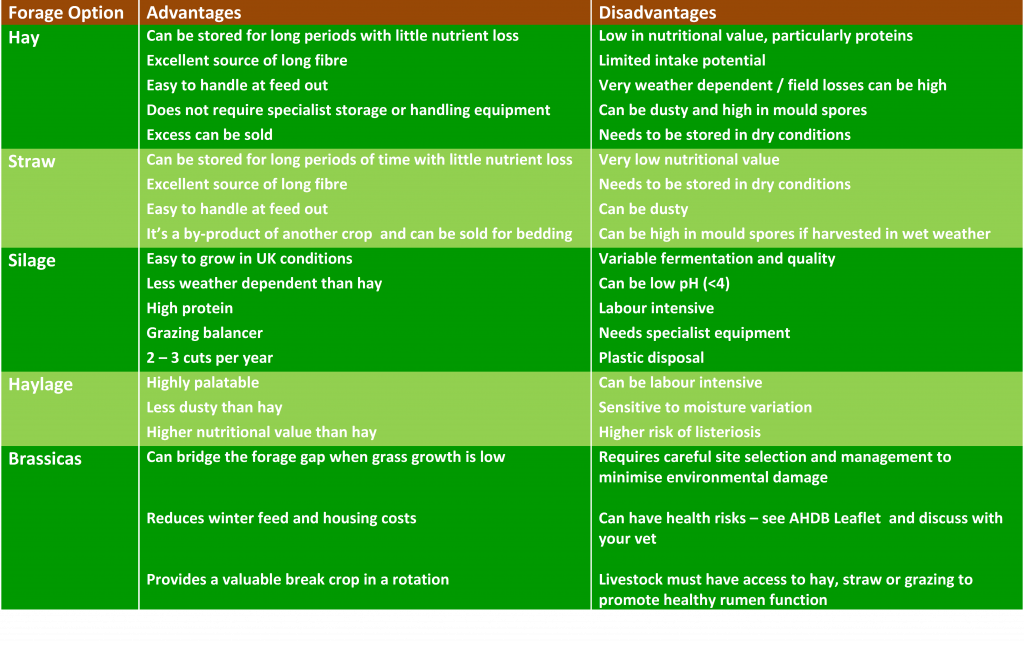Hay – this is fresh grass cut at the mature stage and rapidly dried to preserve the nutritional value. Ideally the crop must be dried to at least 80% DM within 3 days.
Straw – this is a by-product of cereal production. The crop is harvested, the grain is separated and the stem and leaves are baled for storage. Straw is extremely high in fibre but low in nutritional value, meaning it is best fed as part of a mixed ration.
Silage – this is essentially preserved or pickled grass. Once cut the grass is compacted and covered or wrapped so it is airtight. In the absence of air, fermentation of grass sugars into lactic acid occurs lowering the pH and preventing the growth of undesirable micro-organisms. The quicker the fermentation process the better. Grass grown for silage has different requirements to grass grown solely for grazing. To grow good silage you need to have healthy soil and to be using the correct grass varieties. Learn more with EBLEX’s Making grass silage for better returns.
Haylage – this is part way between hay and silage. The grass is cut earlier than it is for hay and rather than the extensive fermentation process for silage, limited fermentation occurs as the raw material is drier.
Brassicas – brassica crops include kale, forage rape, grazing/stubble turnips and swedes and can provide nutritious and cost-effective livestock feed. They are particularly useful for extending the grazing season and for out-wintering. Livestock grazing roots should have mature, healthy teeth, animals in late pregnancy should not be grazed on brassicas to reduce the risk of giving birth in an unsuitable environment. Further reading can be found in EBLEX’s Using brassicas for better returns.


